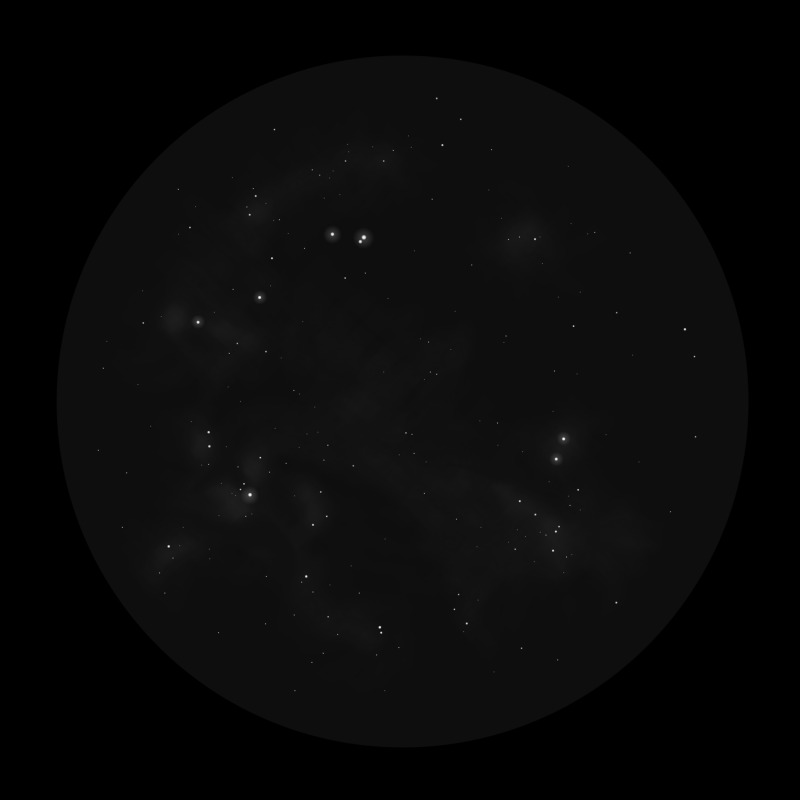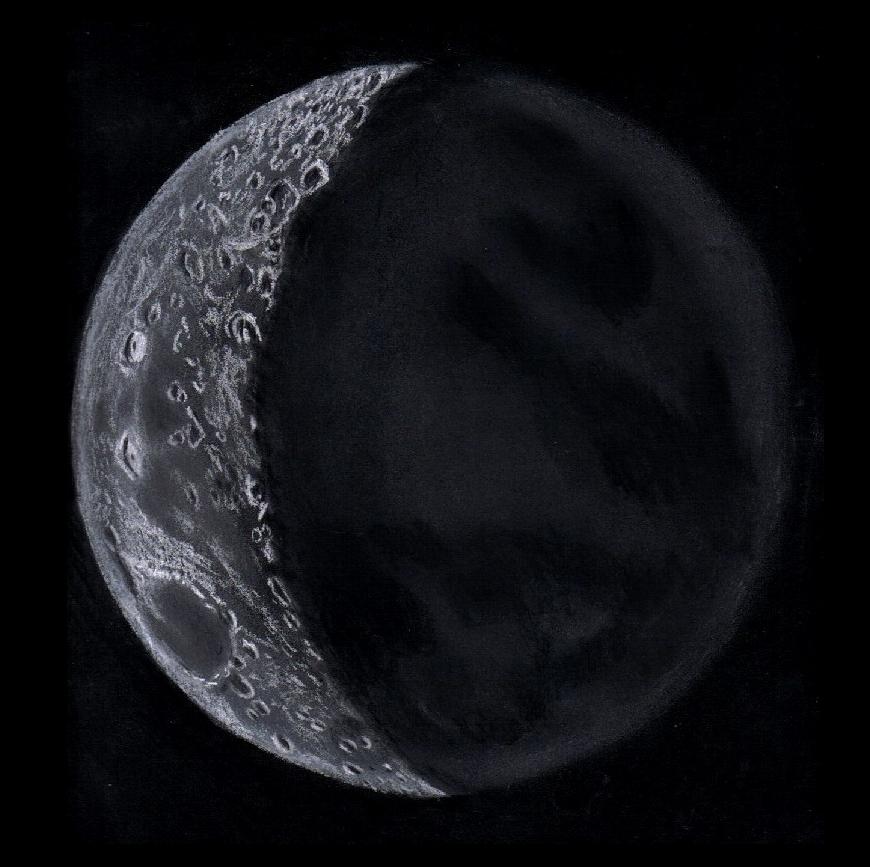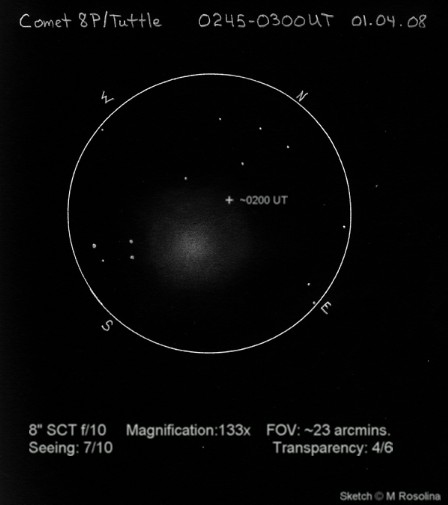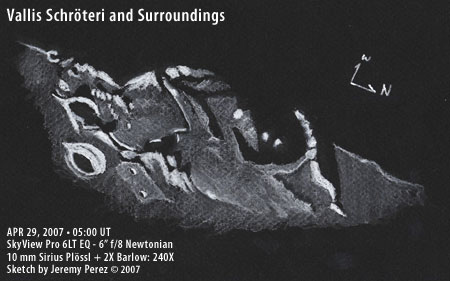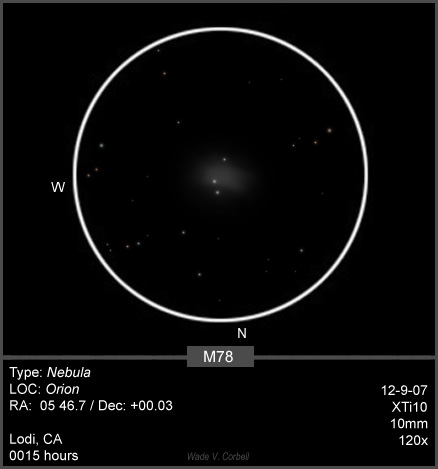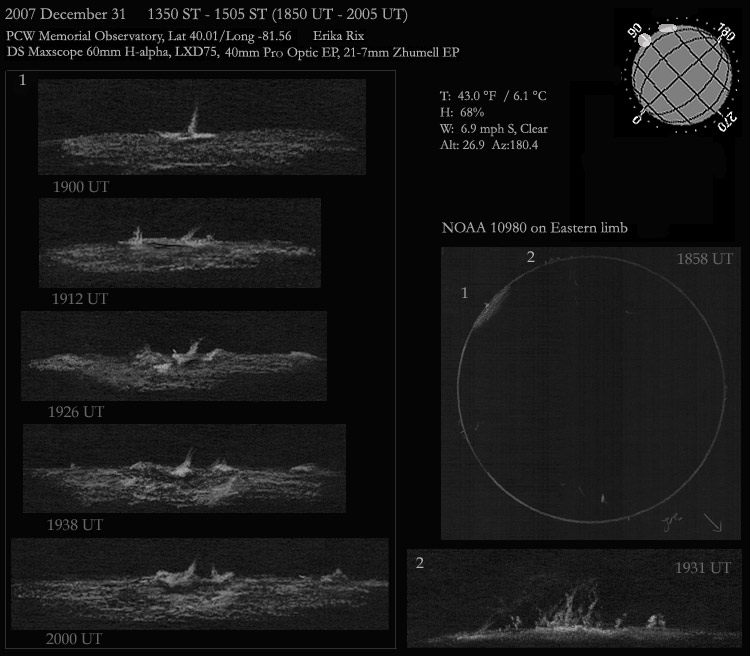
After a couple days off from observing the comet, I was treated to more stunning views. The Moon was out of the sky, and Holmes was really showing its stuff. To the naked eye, it is a soft puff in Perseus. Through 15 x 70 binoculars, it is simply awesome, floating brightly amid a rich star field. Color is now hard to describe, but I think it looks like the most subtle aqua color. Through the telescope, it is wonderfully bright, and loaded with soft detail. The subtle outer halo makes the comet appear even brighter than it is, as though the radiance of the coma is lighting up its surroundings. The outer halo appears brighter to me along the southwest side. The coma sports a well-defined northeast side with a diffuse southwest edge. Its edges have a hairy appearance that looks like it is being blown gently to the southwest. Within the coma, the central condensation now looks detached from the pseudonucleus. Some very subtle radial features began to coalesce after 45 minutes of observing at 120X and 240X. I don’t know if these are real structures, or just the cometary version of Martian canals. A brighter jet seemed to connect the now faint pseudonucleus with the detached condensation.
My measurements with the astrometric eyepiece are as follows:
Central Condensation: 92 arc seconds / 1.5 arc minutes
Coma: 653 arc seconds / 10.9 arc minutes
Outer Halo: 1550 arc seconds / 25.8 arc minutes
Subject 17P / Holmes
Classification Comet
Position* 6:15 UT – Perseus: [RA: 03:45:52.4 / Dec: +50:32:29]
Size Central condensation: 92 arc seconds / 1.5 arc minutes
Coma: 653 arc seconds / 10.9 arc minutes
Outer halo: 1550 arc seconds / 25.8 arc minutes
Brightness* ~ 2.6 vMag
Date/Time October 31, 2007, 10:00 – 11:30 PM
(November, 2007, 05:00 – 06:30 UT)
Observing Loc. Flagstaff, AZ – Home
Instrument Orion XT8 (203 mm dia./1200 mm F/L)
Eyepieces/Mag. 25 mm Sirius Plössl (48X)
10 mm Sirius Plössl +/- 2X Barlow (120X/240X)
12 mm Meade Astrometric +/- 2X Barlow (~100X/200X)
Conditions Clear, calm
Seeing 3/10 Pickering
Transparency ~ Mag 5.8 NELM
*Sources Aerith.net; Starry Night Pro Plus 5
*Based on published data.


